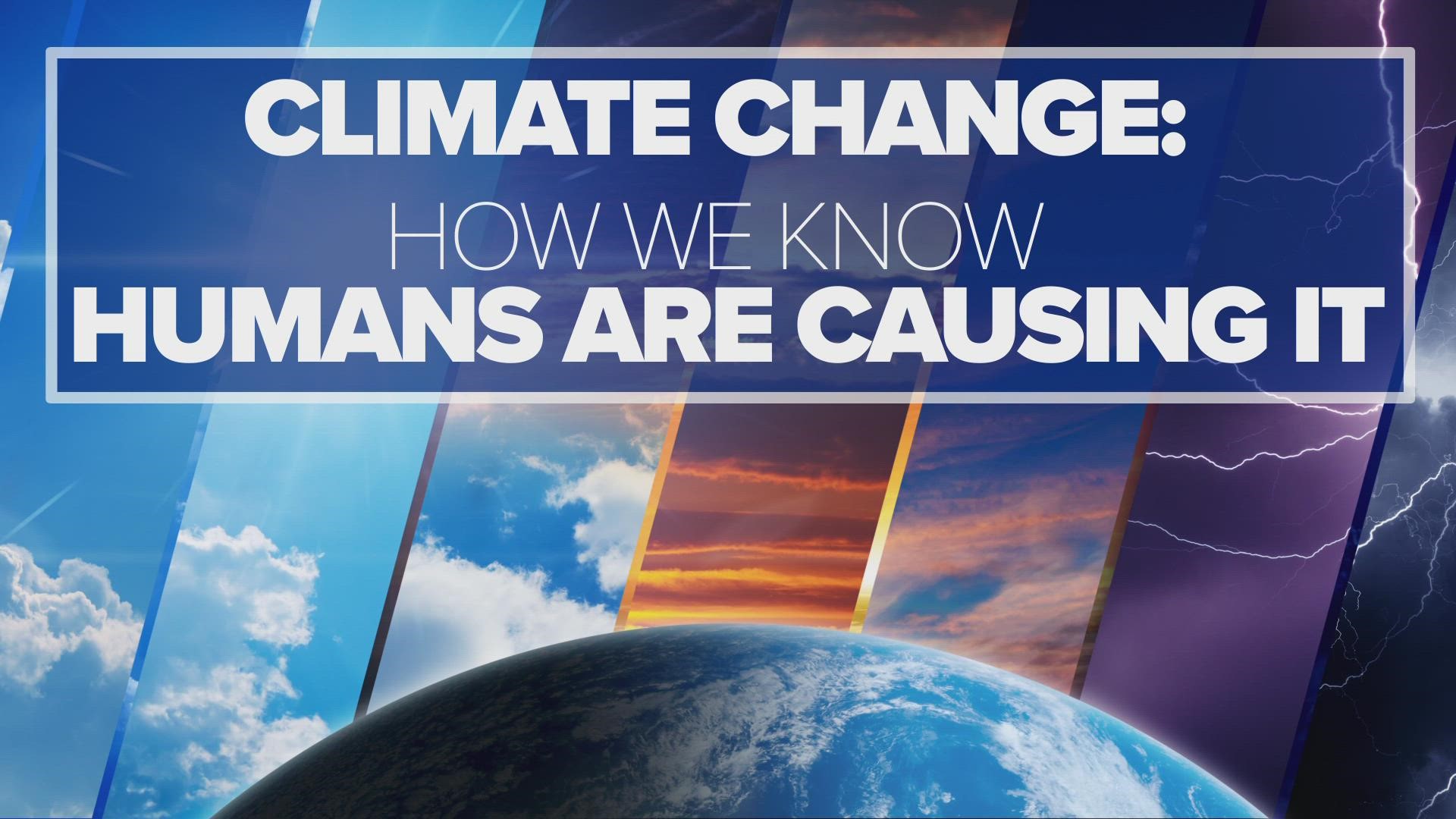MAINE, Maine — The Earth is warming. At this point very few people, even in the depths of the internet, deny this fact. But what I still hear over and over is, “How do we know it’s us? How do we know this is not just a natural cycle?”
I get it. After all, at one point Manhattan was under a mile of ice. Climate change has happened before.
But scientists have been sure since about the 1960s that this change in the climate is being caused by humans.
So how do we know?
The sun
Let’s start with the most obvious possible driver for warming the Earth: the sun. There are a few reasons we know the sun is not responsible for our recent warming. First, the measure of the incoming sun energy to the Earth, called solar irradiance, has remained flat or actually decreased as our temperatures have rapidly increased. This has been especially evident since the 1970s.

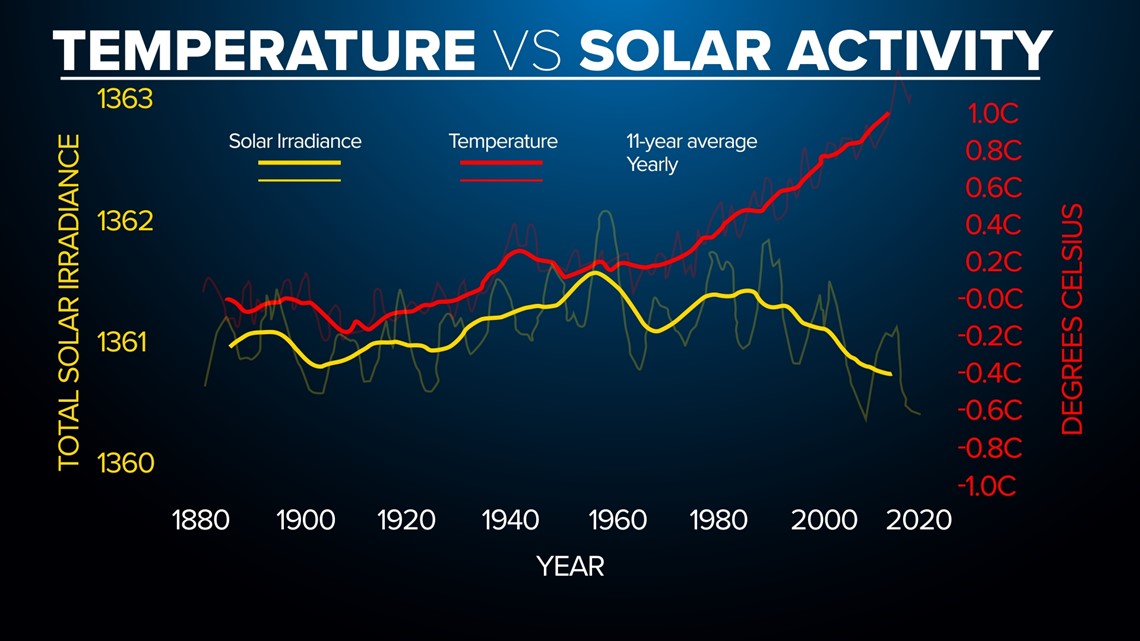
In addition, the air higher in the atmosphere, known as the stratosphere, has been cooling since the late 1970s.

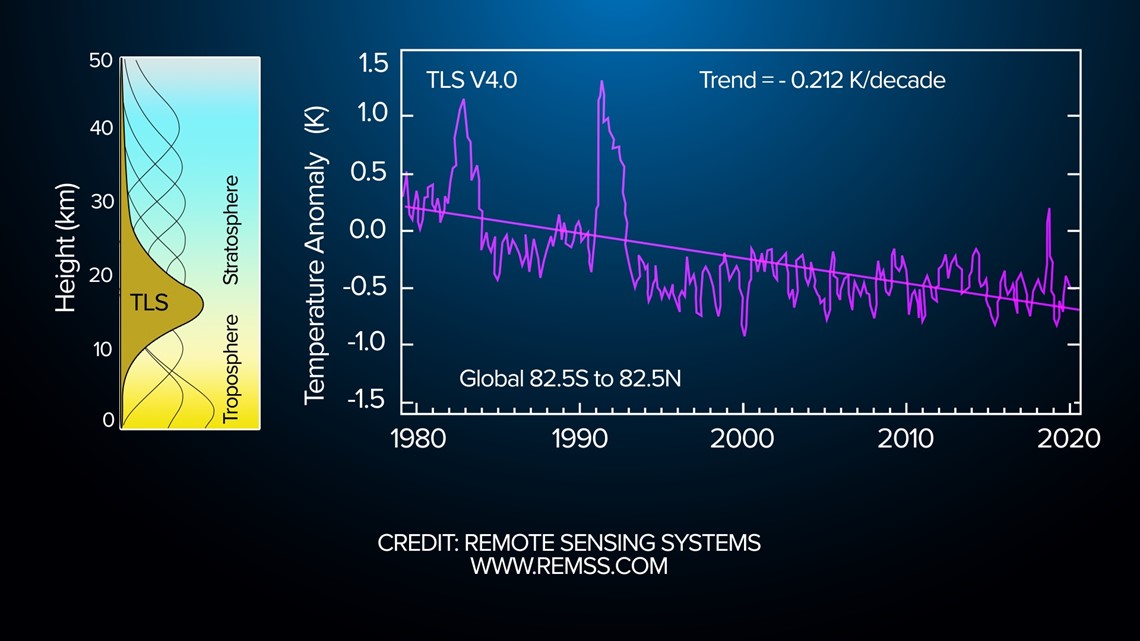
That stratospheric cooling has been taking place while the troposphere, where we live, has been warming rapidly.

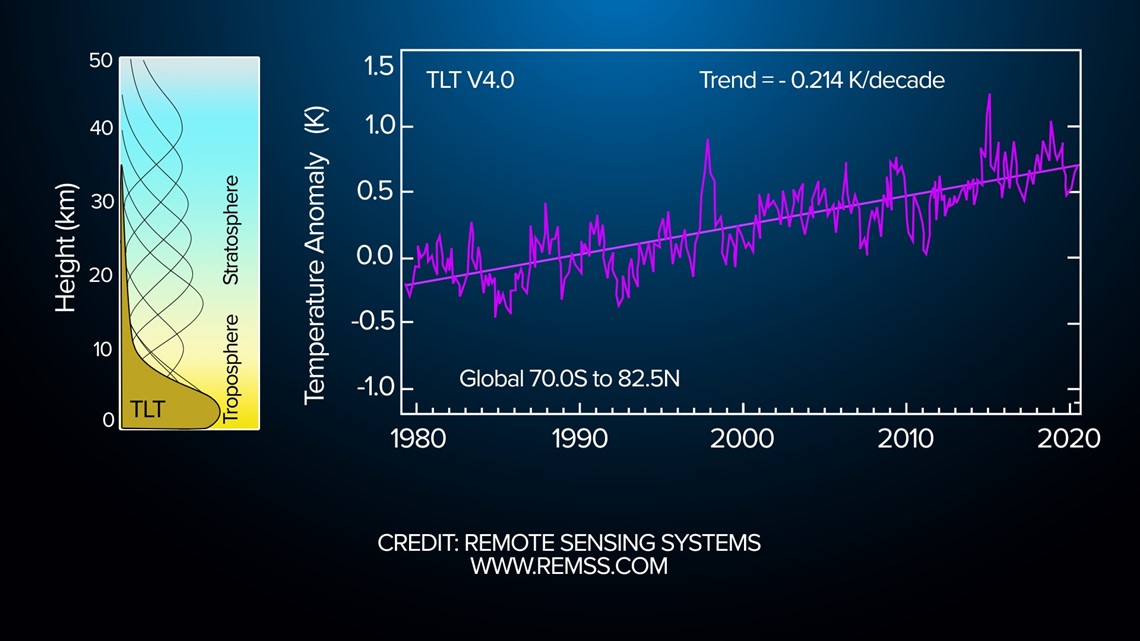
Think about it: If it was the sun, how could the layer closer to the sun cool while the layer beneath it warmed rapidly? The answer is it’s not possible. That’s how we’ve eliminated not only the sun but any external influences.
Carbon dioxide
Carbon dioxide is a greenhouse gas. We’ve known that since the 1850s. And since then, we’ve known that greenhouse gases trap warmth in the lower part of the atmosphere. Generally, this has a positive effect for life on Earth, as it keeps the planet habitable.

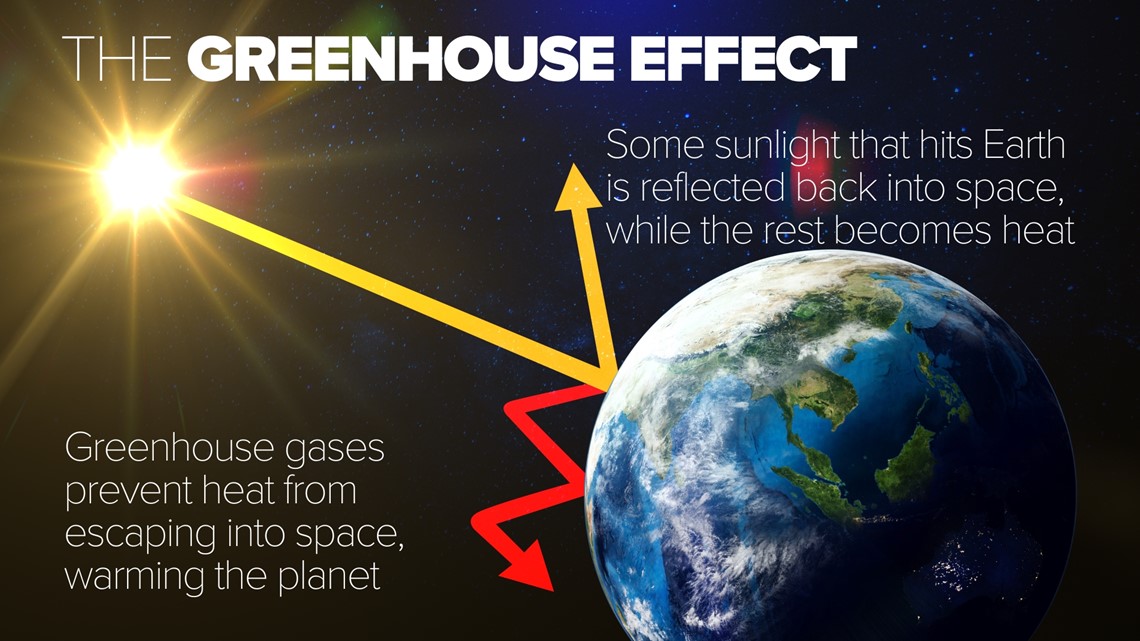
But too much of a good thing can have negative impacts. Using ice cores that contain trapped air bubbles from hundreds of thousands of years ago, scientists have recreated the history of carbon dioxide in our atmosphere, and the graph is striking.

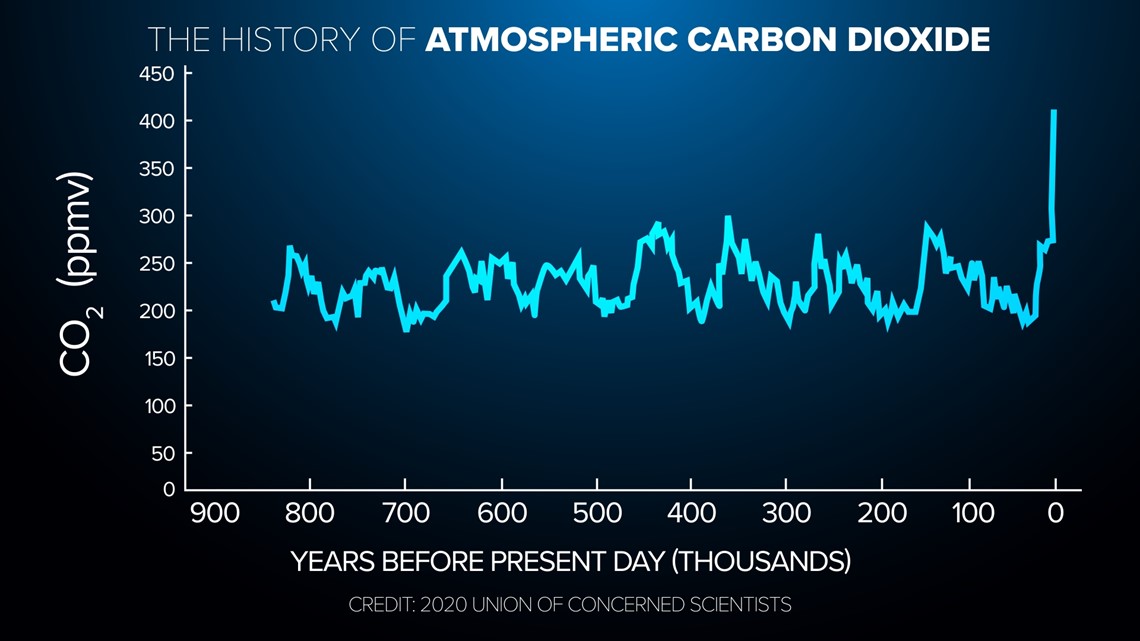
So while there have certainly been natural variations in carbon dioxide in the past, nothing approaches the scale and speed of our recent run-up to over 400 parts per million.
Ok, but maybe the extra carbon dioxide is from natural sources like plants and the ocean? What if I told you we caught fossil fuels red-handed with a fingerprint?
There are three naturally-occurring carbon isotopes on Earth, C12, C13, and C14, the last of which decays to nitrogen with a half-life of about 6,000 years.
Why does this matter? Well, carbon from fossil fuels has been in the ground for so long that the C14 isotopes are almost entirely gone. So, by measuring the ratio of C14 in the atmosphere over time and watching it rapidly decrease scientists can easily conclude that not only is C02 increasing, but C02 is coming from the burning of fossil fuels. This phenomenon is called The Suess Effect.

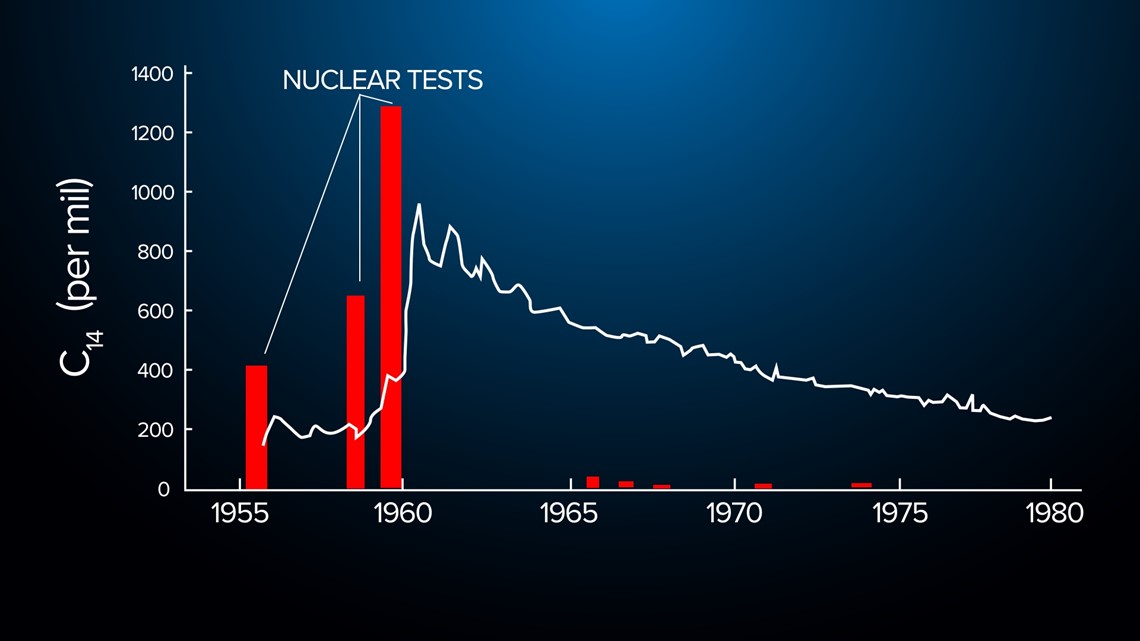
Since CO2 is a greenhouse gas, greenhouse gases warm our atmosphere, and fossil fuels have added CO2 to the atmosphere at an unprecedented rate, it’s pretty much a 1 + 1 + 1 = 3 equation.
The speed of warmig
Although the climate has changed in the past, it has never warmed or cooled at this speed.


Now you might say, how do we know what the temperature was so long ago before thermometers? Scientists use a complex process of temperature proxies including something we see a lot here in Maine ... snow. There are measurable chemical differences in snow formed at different temperatures. Therefore, ice cores can be used to provide a record of temperature going back around 250,000 years.
In addition, yearly banding is found in fossilized corals and lake sediment. Each band has a chemistry that reflects specific temperature ranges. Tree rings are also used, as they get wider or thinner based on temperature.
So scientists can say with a relatively high degree of confidence the Earth has never warmed this quickly before.
Put this all together, and there’s only one scientific conclusion to come to. Human activity is responsible for the vast majority of warming that has occurred on this planet since the 1880s.

